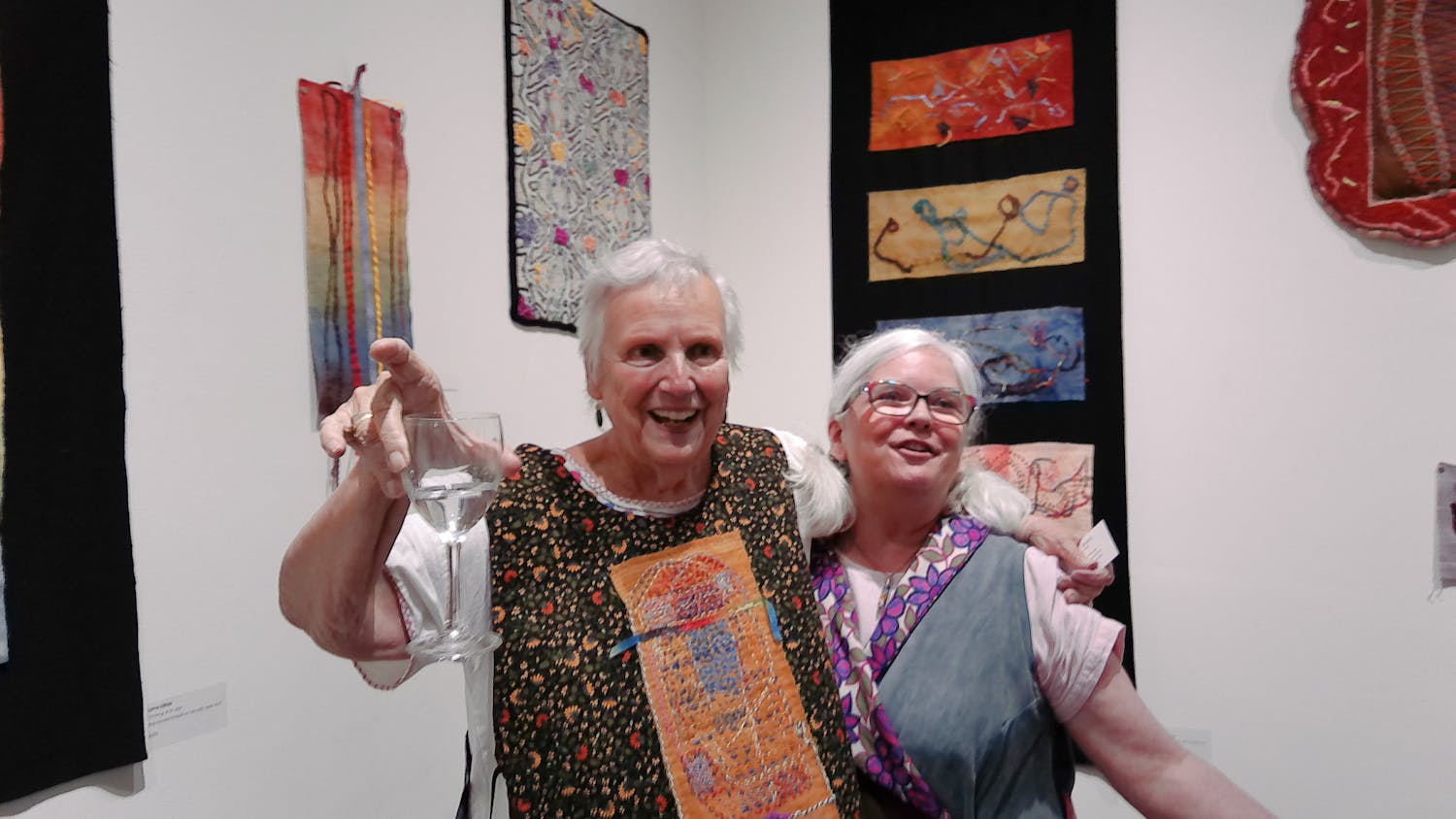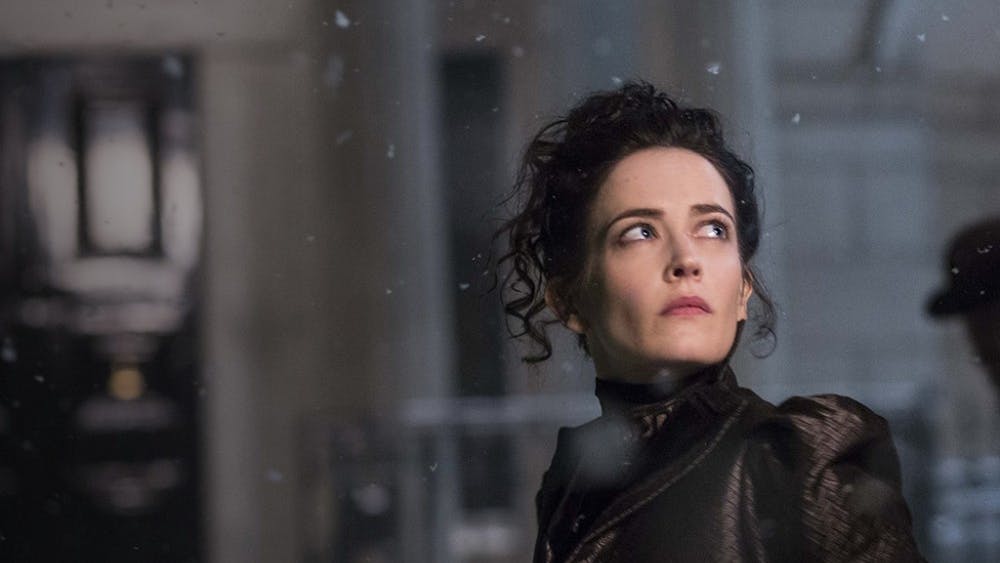Stories about ghosts don't keep Becky Cape awake at night.\nSome workers at the Lilly Library claim they've seen them and heard noises. Cape, head of public services at the library, hasn't seen any in her almost 30 years there, but myths about the library, which is part of the IU library system, abound.\nSome people say it's the tallest building on campus, with 17 floors underground. Some say there are tunnels connecting it to other buildings on campus, or you have to wear white gloves when viewing one of its rare books or manuscripts and raise your hand to have a librarian turn the page.\nPerhaps the myths survive, says Carla Carson, a docent who leads tours of the library, because many of the 16,000 who pass through it each year are alumni returning to the University who tell her they never went inside in all their years at IU. She says many people don't realize that anyone from the campus or the community can view most of the library's rare collections.\nThe truth is the Lilly Library, south of Showalter Fountain in the fine arts plaza, houses the University's rare books and manuscripts on seven floors and functions as a museum. \nBooks, manuscripts and paintings are displayed throughout two floors open to visitors. There are three floors of closed stacks and two floors partially underground. The main entrance and gallery is actually the third floor. The library's reading room, where materials are viewed, is off the main gallery. \n"Anybody can use it. You just need your picture ID," she says, "and that's what always surprises people." People who want to view anything can check in with the receptionist inside the main gallery and be allowed into the reading room. Titles of some of the available works can be found online.\n"We're not in the business of just locking things up and not letting anybody ever touch it," Cape says.\nThe most frequently requested items are works from the Renaissance and medieval collections, followed by items about Latin America. The Mendel room, above the main gallery, holds the Latin American collection, which dates from colonial times to the Latin independence movement and is said to be the finest in the world, Carson says. Shakespeare's folios are also popular. The oldest things are Babylonian cuneiform tablets and cones from 3000 to 2000 B.C.\nSome items are off limits to patrons because their condition is fragile or because of the terms of purchase, Cape says. A letter from George Washington accepting the presidency cannot be handled. It has faded so badly they don't want it exposed to light. But a facsimile can be viewed in addition to other letters by Washington, Cape says.\nMore recent works among the library's 7 million manuscripts include papers from Kurt Vonnegut and Sylvia Plath. There are also scripts from the original "Star Trek" and "Star Trek: The Next Generation" television series, as well as "Hamlet" written in Klingon.\nIn addition, a desk used by Abraham Lincoln at a Springfield, Ill., law firm is on display in the Lincoln room, which is decorated similar to the way the White House looked during his administration, including a chair in which he sat.\nThe Gutenberg Bible is the most famous work in the library, Carson says. Dating to 1455, it is thought to be the first book printed with moveable type, although that claim was recently disputed in an article in the New York Times. There are 48 known copies of the original 180 printed. Lilly bought its copy from a collector in Chicago when it opened the library in 1960. Christie's auction house found a missing page from IU's bible and sold it to the Lilly Library in 1977 for $24,000. \nThe holdings are worth a tremendous sum of money, Cape says. For example, the Lilly Library owns one of 22 copies of the Declaration of Independence; another recently sold for $8 million to television producer Norman Lear.\nThe library is named for collector Josiah Kirby Lilly, whose rare books collection forms the foundation of the Lilly's holdings. IU started collecting rare books in 1914, Carson says, and in the 1940s established a Department of Special Collections. The collection was originally stored in Franklin Hall, says Cape. \nIn 1954, J.K. Lilly, grandson of Eli Lilly, wrote to then-IU president Herman B Wells that he was looking for a depository for his rare book collection. Lilly had amassed more than 20,000 volumes and 17,000 manuscripts as well as oil paintings and prints of historical figures, all of which he donated to IU. Armored trucks transported the collection to IU during the course of several years.\nWhen it became public that Lilly had donated his collection, "rare book authorities said it was the largest and most valuable gift ever given to an American university," Carson says. Lilly also collected 6,000 gold coins, which are on display at the Smithsonian Institution in Washington, D.C.\nSenior Matt Meyer, who took the tour Friday, is taking his first art history course and working toward his second bachelor's degree. He says the professor told the class there were manuscripts pertaining to the medieval art they are studying.\nMeyer says reading the works in the Lilly Library, one can get a sense of history directly from the source. "It's the best way to get an account because everything you've read is someone else's historical work," he says.\nSenior Meg Abell, who accompanied Meyer to the library, says, "I'm really interested in coming back and reading the diaries of the people who went out West." She was speaking about works housed in a room named for alumnus Robert S. Ellison, who collected books on the American West.\nGraduate student Kelly Crowley, viewing the Lincoln room's wall-lined bookcases, furniture and exhibits says, "I can't think of another place that has something like this. It's really special."\nThe Lilly Library is open 9 a.m. to 6 p.m. Monday through Friday and 9 a.m. to 1 p.m. Saturday. Tours of the library are 2 p.m. every Friday.
Turning the pages of History
Lilly Library's historical documents make for a cultural diversion
Get stories like this in your inbox
Subscribe





